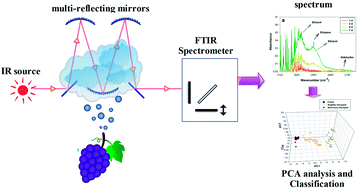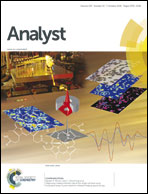Analysis and discrimination of grape spoilage via volatiles: a comparison between long optical path Fourier-transform-infrared spectroscopy and sensor arrays
Abstract
Fruits release specific volatiles as vapors during spoilage that can provide information about the spoilage stages of fruits. We used long optical path Fourier Transform Infrared Spectroscopy (FTIR) and sensor arrays comprising carbon dioxide and ethanol sensors to study the grape spoilage process synchronously. The results revealed that specific volatiles, such as carbon dioxide, ethanol and esters, are released from grapes during spoilage. The presence and concentrations of these compounds gradually change with storage time. Through chemometric analysis, the infrared spectra of volatiles from different spoilage stages of grapes were successfully classified. As a simple form of instrumentation, the sensor arrays also have the ability to discriminate whether the grapes have decayed. We established a Soft Independent Modeling of Class Analogy (SIMCA) model to classify the grape samples into different spoilage stages, and the model according to different quantities of grapes is also discussed. This study demonstrates that it is possible to characterize grape spoilage by analyzing the released volatiles.


 Please wait while we load your content...
Please wait while we load your content...